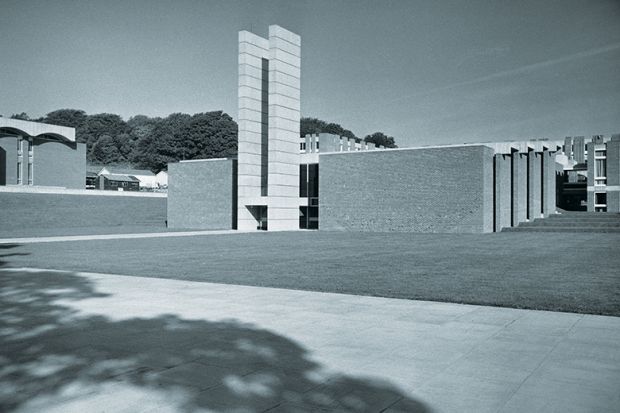View the THE Young University Rankings 2021 results
Universities around the world face an uncertain post-pandemic future. Are there any lessons they might learn from the last great expansion of higher education in the 1960s?
Plate glass pioneers in the UK, such as the universities of Sussex and East Anglia; the “reform” universities of West Germany; Clark Kerr’s University of California; and national universities in the newly independent states of Africa, the Caribbean and Asia all had much in common: distinctive architecture, innovative curricula and wider participation rates for women and men. Over a half-century later, the lofty idealism of those times has disappeared. But the legacy remains.
The new universities of the 1960s broke the mould most by overhauling the curriculum. Out went a stale old offering based on rigid divisions between the arts and sciences; in came interdisciplinary degrees, topped out with voguish new subjects such as sociology and business studies. New universities began to abandon the Eurocentrism of their predecessors. African and Chinese studies departments opened in the New World as well as the Old. Transformative technologies were also deployed. The first “open university” started up in Milton Keynes in 1969, pioneering the online distance learning that has become the norm during Covid-19.
While many of these innovations survived, interdisciplinary programmes by and large did not. Scientists felt they diluted their subjects. Students struggled to grasp two majors, when usually one sufficed. The mistake here was forcing change through teaching rather than research. The most successful new universities of the 1960s were those that grounded interdisciplinarity in research and postgraduate study – for example, microbiology at the University of California, San Diego; biomedicine at the Chinese University of Hong Kong; social history at the University of Warwick. Research-led teaching was not valued then as much as it is now.
The 1960s universities looked different, too. New campuses proliferated like never before. Staff and students lived and learned together on pedestrianised greenfield sites. No journey from dorm to classroom took more than 10 minutes. Communal life, argued the experts, would enhance the educational experience.
Again, the reality turned out differently. Critics disliked the “ivory tower” effect – students isolated from the rest of the community like a pampered elite. Living on campus was expensive and boring. In western Europe especially, students opted to live at home or commuted in from cities nearby. So, while there are many more new universities now, there are few new campuses. For example, Maastricht University, one of Europe’s leading institutions, which was founded in 1976, is located in repurposed heritage buildings in the city centre. As Covid-19 drives out the retail sector from the high street, this could become more common. But universities should make a virtue of the campus. After all, it is favoured by the leading high-techs: Apple, Facebook and Google. Campuses are greener and leaner and much easier to adapt should Covid-19 recur.
Perhaps the most important lesson of the 1960s is that the expansion of higher education was not left to market forces. Back then, most countries undertook a national conversation about what kind of universities were required and for whom. Debates about tertiary education were also discussions about the future of society. Universities learned from one another. There was little of the competitive sparring over students and research income that we see today. Business leaders, philanthropists, local authorities and schools joined in the planning. Universities were valued as a public good.
Nowadays, there is a different ethos. Universities are businesses and most new universities – apart from mergers – are private operations. The large public subsidy given to the new universities is a thing of the past. However, no one in the 1960s expected the state to pick up the tab forever; rather its job was to provide a stimulus. In the UK, Lord Robbins’ famous report of 1963 did not rule out student loans. But for the oil crisis in 1973, the new universities might have freed themselves from over-dependence on public funding.
By and large, these pioneering newcomers were led by veterans of the Second World War and the austerity that followed. They were big on vision but cautious on spending – just what is needed now. As vice-chancellors around the world plan for Generation Alpha, they could do worse than look back to the utopian universities of the baby-boomer era.
Miles Taylor is professor in modern history at the University of York. He is co-editor of Utopian Universities: A Global History of the New Campuses of the 1960s (Bloomsbury Academic, 2020).
The THE Young University Rankings 2021 will be published at noon BST on 23 June.
POSTSCRIPT:
Print headline: Plate glass insights
Register to continue
Why register?
- Registration is free and only takes a moment
- Once registered, you can read 3 articles a month
- Sign up for our newsletter
Subscribe
Or subscribe for unlimited access to:
- Unlimited access to news, views, insights & reviews
- Digital editions
- Digital access to THE’s university and college rankings analysis
Already registered or a current subscriber? Login







